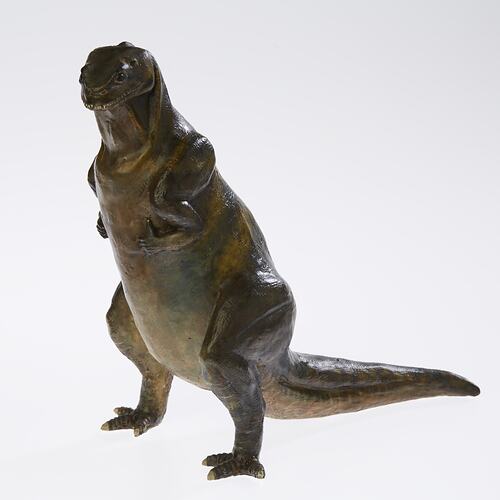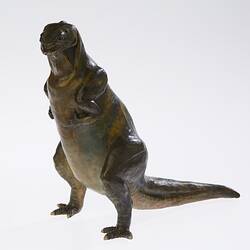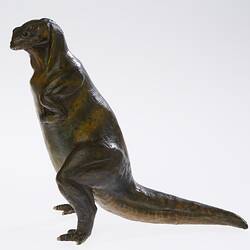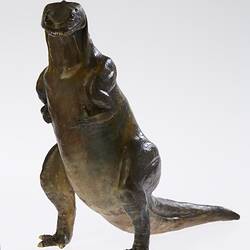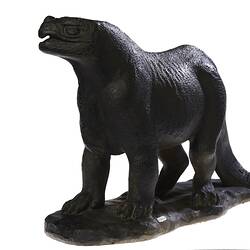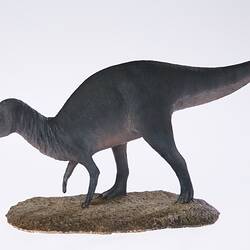Summary
This model of Iguanodon was made in the 1880s. Iguanodon was one of the first dinosaur genera to be discovered. Scientists were just beginning to understand what dinosaurs looked like, and they made models like this one to illustrate their discoveries. In the 19th century, near-complete fossil skeletons of Iguanodon were found in Bernissart, Belgium. The bones of these skeletons had remained in life position, and showed that while Iguanodon most likely spent time on all fours, it was also able to walk on its hind legs only. Scientists also discovered that a short spiked bone earlier thought to be a horn on the animal's nose, was in fact a spike on the tip of Iguanodons thumb. Models like this help us understand the history of research on Iguanodons, and also illustrate how scientific discoveries have changed people's view of dinosaurs over the past 160 years.
Specimen Details
-
Taxon Name
-
Author and date of publication
Meyer, 1832
-
Date Identified
1872
-
Number Of Specimens
1
-
Sex
Unknown
-
Category
-
Scientific Group
-
Discipline
-
Collecting Areas
-
Type of Item
Taxonomy
-
Kingdom
-
Phylum
-
Subphylum
-
Class
-
Order
-
Family
-
Genus
-
Species Name
mantelli
